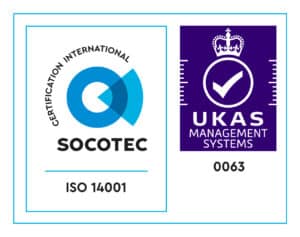
Although CRT televisions and monitors have been superseded by flat screen technology there are an estimated 100 million of them still within the UK. Once they meet their end of life or become non working they need to be recycled as they contain numerous hazardous components that can pollute the environment. For example, the glass alone can contain an average of 1kg of lead, a poisonous metal when ingested by humans and animals. In the UK we have the recycling equipment to perform this safely and effectively so let’s look at how this is achieved.
Whether you are a householder taking your old TV to the Household Recycling Centre (HRC) or a business, essentially the TV will end up at a similar location for recycling. This will be an Approved Authorised Treatment Facility for Electrical Waste. In layman’s terms this means a business that has been approved by the Environment Agency to properly handle and recycle electrical waste. Some recycling centres will adopt a slightly different process but they will have the end result of separating each material component from the television for treatment and recycling.
The Recycling Process

Pure Planet Recycling have teamed up with a company that has the world’s first leaded glass furnace as part of their TV and monitor recycling process. This ensures when we collect televisions and monitors we can ensure they are recycled here in the UK in a very efficient manner. The step by step process adopted to recycle the televisions is as follows;
- The televisions are loaded onto a conveyor belt, for ease of movement to the team of staff that perform the initial dismantling. The outer plastic casing is removed, the circuit board stripped and any cabling removed. This leaves just the glass screen/tube and allows for the other less hazardous components to have their materials recovered separately.
- With the screen/tube now separated they can be fed into the glass recycling machinery. The first stage of this is to crush and transport this into a trommel, separating the glass from any residual plastic or ferrous metal components. The glass is then transported on the conveyor into an X-RAY machine that separates out the leaded glass of the CRT tube from the unleaded glass of the viewing screen. The batches of either leaded or unleaded glass are then crushed and ground again to create coarse sand of each type.
- The leaded glass is lastly fed into the unique glass furnace, as pictured above. Operating at around 1000*c the furnace melts the coarse leaded sand, separating the lead then by it’s weight and gravity the lead sinks to the bottom. The lead is then removed from the furnace into containers as pictured to the right, and then processed back into lead ingots for reuse. The unleaded glass is then forced from the furnace in a thin stream of molten glass, it can then be then reprocessed into glass beads, sand, glass, pebble or tiles.
We have tried to summarise the recycling process here and hope it better explains how a TV is recycled. When a business recycles a TV or CRT monitor with Pure Planet Recycling you can be sure of achieving a high recycling rate in an environmentally friendly manner. For more information please call us on 01234 315496.




